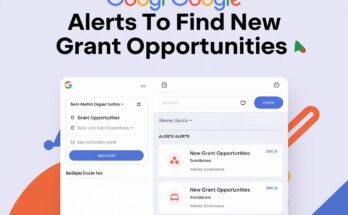In today’s digital age, video marketing has become a powerful tool for nonprofits seeking to amplify their message, engage supporters, and increase donations.
If you’re wondering how to harness this incredible medium to promote your nonprofit, you’re in the right place!
In this post, we’ll explore various strategies to effectively use video marketing, providing practical examples and tips that can help your nonprofit thrive.
1. Why Video Marketing?
Before diving into specific strategies, let’s talk about why video marketing is essential for nonprofits.
Videos are incredibly engaging; they can convey complex emotions and messages in a short amount of time.
In fact, research shows that people remember 65% of the information they see in a video, compared to just 10% of what they read in text.
Moreover, platforms like YouTube, Facebook, and Instagram favor video content, which means that your videos are more likely to be seen by your target audience.
Video marketing is rapidly becoming a preferred method of communication.
Research shows that videos can increase engagement rates significantly and improve retention.
According to a report by Wyzowl, 87% of marketers say that video gives them a positive return on investment (ROI).
For nonprofits, this means that leveraging video can lead to increased awareness, more donations, and a stronger community.
Videos can succinctly convey the mission of your organization, showcase the impact of your work, and create an emotional connection with your audience.
2. Identify Your Target Audience
Before creating any content, it’s essential to understand who your audience is. Knowing your audience helps tailor your video content to their preferences and interests.
Consider factors like age, location, and causes they care about. Use demographics and analytics from social media platforms to inform your strategy.
For example, if your nonprofit focuses on youth education, create videos that resonate with younger audiences by using vibrant visuals and relatable content.
3. Create Compelling Stories
At the heart of effective video marketing lies storytelling. People connect with stories, especially those that evoke emotion. Share real stories from beneficiaries, volunteers, and supporters.
Highlight the challenges they faced and how your nonprofit has made a difference.
For instance, if you run a food bank, create a video featuring a family who benefited from your services, showcasing their journey and gratitude.
This not only humanizes your organization but also inspires potential donors to contribute.
4. Leverage Different Types of Video Content
Different types of video content can help diversify your marketing strategy.
Here are some examples:
a. Promotional Videos
Create short videos that highlight your mission, upcoming events, or campaigns. For instance, if you’re launching a fundraising event, develop a dynamic promo video that includes engaging visuals, upbeat music, and clear calls to action. Share these on your social media channels and website.
b. Educational Videos
Provide informative content related to your cause. This could include tutorials, webinars, or discussions that position your organization as a thought leader. For example, if your nonprofit focuses on mental health, create educational videos about coping strategies, featuring experts in the field.
c. Live Streams
Engage your audience in real-time through live events or Q&A sessions. Live streaming allows for immediate interaction, creating a sense of community. Host a live Q&A session with your executive director to discuss your organization’s goals and how supporters can help.
d. Testimonial Videos
Gather testimonials from those who have benefited from your services. This adds credibility and relatability to your organization. For example, create a video montage of various testimonials from community members who share their experiences and the positive impact your nonprofit has had on their lives.
5. Optimize Your Videos for Different Platforms
Consider where your audience is watching videos and optimize content accordingly. Each platform has its own best practices:
- Facebook: Use shorter videos, ideally 1-2 minutes long, that grab attention quickly.
- Instagram: Utilize Stories and Reels for visually appealing content that can be consumed quickly.
- YouTube: Create longer, in-depth videos that provide valuable information and storytelling.
Tailoring your videos for each platform will ensure they resonate with viewers and encourage sharing.
6. Use Video SEO Techniques
Incorporate keywords, engaging titles, and descriptions to improve your videos’ visibility on search engines and social platforms.
Research keywords related to your nonprofit’s mission and include them in your video titles and descriptions. This will help potential supporters find your content more easily.
For example, if your nonprofit focuses on animal rescue, use keywords like “pet adoption” or “animal shelter” to attract the right audience.
7. Promote Your Videos
Once you’ve created your videos, it’s time to share them! Promote your videos across social media, your website, and email newsletters. Use catchy headlines and teasers to encourage clicks.
Collaborate with influencers or local community leaders to extend your reach. They can share your videos with their followers, amplifying your message and increasing your visibility.
8. Measure Your Success
Finally, use analytics tools to track views, engagement rates, and audience feedback.
Platforms like YouTube and Facebook provide in-depth analytics that can help you understand what content resonates best with your audience. Adjust your strategies based on these insights.
If a particular type of video receives more engagement, consider creating more content in that style.
A Real-World Example
Consider the story of Hope for Paws, an animal rescue organization that successfully used video marketing to increase donations and engagement.
They produce heartwarming rescue videos that showcase the process of saving animals and finding them forever homes. By telling these stories visually, they connect emotionally with viewers, encouraging them to donate or adopt.
One of their most popular videos featured a rescue of a stray dog named Tilly. The footage captured the dramatic moment of rescue, the transformation of Tilly after being cared for, and the emotional reunion with her new family.
This video went viral, resulting in a significant increase in donations and volunteer applications. By harnessing the power of storytelling through video, Hope for Paws created a compelling narrative that resonated with their audience.
Conclusion
Video marketing is a powerful tool for nonprofits to share their missions, engage supporters, and drive action. By understanding the importance of video, identifying your audience, and creating compelling content, your organization can stand out in a crowded digital space.
If you’re ready to take your video marketing strategy to the next level, subscribe to the Nonprofit Navigators Newsletter for more expert tips, access to job opportunities, grant opportunities, exclusive webinars, and events.
Additionally, check out our Corporate Sponsorship Proposal Template to help you secure funding for your nonprofit.
Don’t miss out on the chance to elevate your organization’s impact through effective video marketing!
Additional Resources:
- The Small Business’s Guide to Winning Grants
- Request for Proposal Success: How to Write Proposals That Win
- The Ultimate Guide to Federal Grant Applications: Techniques for Success
- Digital Marketing for Nonprofits: A Comprehensive Guide to Boosting Your Impact Online
- Mastering Online Fundraising: A Nonprofit’s Guide to Digital Success




